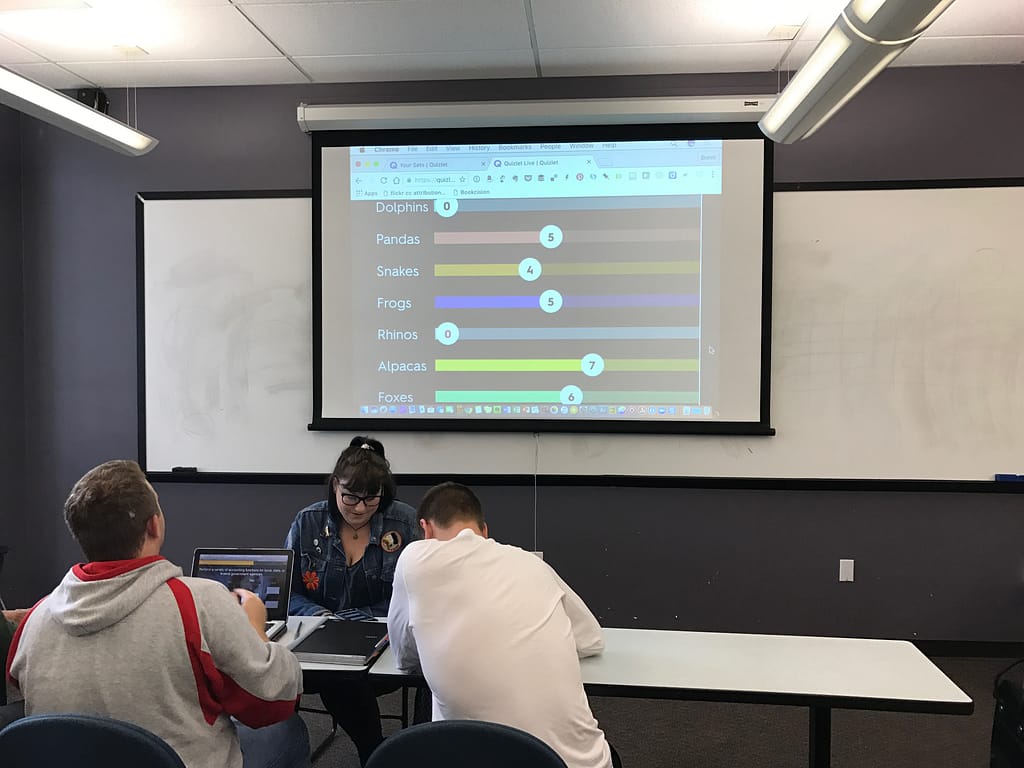
I’m experimenting with flashcards in my teaching this semester. For as long as I’ve been teaching, I’ve strongly recommended flashcards to my students. However, I knew most students didn’t follow through on the advice.
Over the summer, I decided to have my teaching assistant make flash cards for my entire introduction to business course. I recognized that some of the benefits from flashcards are derived by actually making them, yourself. However, I suspected that a larger percentage of students would receive at least some advantages that this form of retrieval practice offers, even if they didn’t make them from scratch.
After doing a little bit of research on possible tools, I decided to select Quizlet as the app for this function.
Results
In my recent mid-semester review, many students commented that the flashcards were contributing to their learning. However, I was concerned that the focus was still on memorization and not enough on application.
This wasn’t the fault of Quizlet, of course, but more so that having baseline knowledge of terms and their associated definitions will only take us so far.
I also was concerned that they were only likely accessing the flash cards, at best, once a week. That level of frequency wasn’t going to prove anywhere near as useful as if they could increase the times they accessed them.
Some students have downloaded the Quizlet app on their phones and have reported being more likely to review them a few times each week. I have the flashcards embedded from within our LMS, which ensures that they’ll likely go through them at least that one time, but doesn’t provide any more accountability than that.
Something New
Overall, my thoughts this semester about Quizlet have been positive, though I already have some ideas about how I might want to tweak things next time around.
However, this week I tried a new feature of Quizlet, in class, and was instantly in awe.
Quizlet Live
The name of this feature is Quizlet Live. It is a game that you can play with a minimum of six students (two teams of three), all of whom have a mobile device.
Introducing Quizlet Live from Quizlet on Vimeo.
I’ve got around 30 students in this class. When I accessed the flashcard deck that reviews for our upcoming exam, I chose to use Quizlet Live.
It brought up a code on my computer that all the students entered into their phones. Then, I had the option of having teams randomly created, or assigning students to teams.
Students then moved around the classroom to sit next to their teammates. Each student saw a question on their devices and 3-4 possible answers.
Only one of the students on a team had the correct answer on their screen, so they spent a lot of time comparing possible answers and discussing the likelihood of one of their answers being the correct one.
On my computer, a scoreboard was displayed, showing each team’s progression. With each correct answer, their team’s circle would move forward on the line. With each incorrect answer, their team’s circle moved all the way back to the beginning.
Recommendation
I wish I had a video of the students playing the game, or at least some audio. Every single student in the room was completely engaged.
They laughed. They groaned. They failed. They tried again.
Quizlet Live provided information about what the students learned while playing, as well as where they need additional clarification.
I will need to think about how to review more effectively, next time. I’m afraid I may have skipped too quickly back to the game play, for another round, versus providing them with further explanations of difficult concepts.
Still, I highly suggest you check out Quizlet Live for an interactive way of reviewing in one of your courses. This tool is especially good for the kind of information that would be suitable to put on a flashcard.




In the article “The New Way Doctors Learn” (http://ideas.time.com/2012/03/07/the-new-way-doctors-learn/) the article describes how a Harvard University medical school professor who teaches urology sent weekly emails containing multiple-choice questions to one group of his students. The article states that “[a]t the end of the year, the students who received the spaced emails scored significantly higher on a test of their urology knowledge.”
I’m trying to figure out a way of automating the process of my students receiving questions on a periodic basis. One way would be to create a number of questions as WordPress posts, schedule in advance when each set of questions will be published and have the students subscribe to the WordPress blog. But in order to use these same questions during subsequent years, you would need to go through the posts (containing the questions) and change the dates for that year. Does anyone know of any more efficient way of automating the dissemination of questions to students on a regular basis?
Depending on which LMS you use, it might have the capability of moving/transferring over discussion questions each semester. However, having used 4+ LMSs, they aren’t typically very good at the application you’re describing, even if they have some of the features that would support it.
We use MailChimp as our email system (for Teaching in Higher Ed and for my husband’s podcast, Coaching for Leaders). It has the ability to create what are called “drip” email campaigns, which would allow you to do what you’re describing. They have a freemium business model and I think their free plan allows for something like up to 2k subscribers. I’m not sure if “drip” is included in that pricing model, or not, though. I’m also not sure if the learning curve would be worth it for you, if that’s all you were going to use it for…
I believe I saw somewhere that WordPress has a plug in for “drip” courses, or something to that effect. Might be worth searching for…
I also asked your question in the Teaching in Higher Ed Slack channel to see if anyone else has more ideas on this.
Thanks for the article. I’m looking forward to reading it.